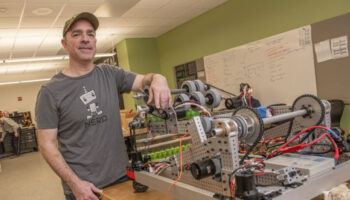The Crit

When I was studying industrial design, the day I most dreaded was a Thursday morning. That is when you took your prized sketches, renderings or models and put them in ‘Crit corner’.
It was the equivalent of starting a new thread on a forum and getting feedback. But trust me; honest face to face feedback is way more daunting than just posting online.
I remember the first few I took pretty badly. Who were these people to say my rendering was a bit s**t or my idea for a kitchen gadget was not thought through! But after a few weeks of this I started to really understand the point of it. It not only taught me the extremely valuable lesson of listening to other’s comments (despite what I thought of them), but it taught me to be able to critique myself more effectively.
As designers and inventors we pour not just hours into our concepts but often our hearts. It isn’t easy to find that what you thought was the next big thing, other people think is a little bit s**t. It’s probably the single biggest issue that new inventors face.
Learning to listen and take feedback is essential to being successful in this business. I have had a few angry encounters over the years from people pitching me ideas to review. People that just want to only hear nice things and for you to buff their ego. If you can’t handle negative feedback, STOP NOW!
Now of course, you’ll hear a variety of feedback based on the needs of the companies you show. It doesn’t mean you need to change everything you are doing, but it can help you focus on what seem to be the best parts of your invention.
I’ve talked before about doing your homework before you choose who to show. It’s important of course to show a variety of people and then look at the feedback and find some common themes. However, don’t take rave reviews from friends and family as any sign the idea is any good! If you want to test ideas yourself you’ll need to step out of that process. If they know you invented it they are not going to 100 per cent honest with their appraisal.
Learning to take a helicopter view will help to distance your personal feelings and take a more pragmatic approach to filtering the feedback you get.
Remember the feedback you receive is based on what you tell and show. People are not mind readers, so make sure what you present is clear and to the point. Presentation techniques are a separate topic I’ll cover at another time.
So to sum up: take feedback with a smile. The world of toys is extremely diverse so what isn’t right for one can be ideal for another. Take forward what you hear to not only improve your current idea, but what you will develop and show in the future.
Richard Heayes is founder of Heayes Design. He can be contacted on [email protected].























